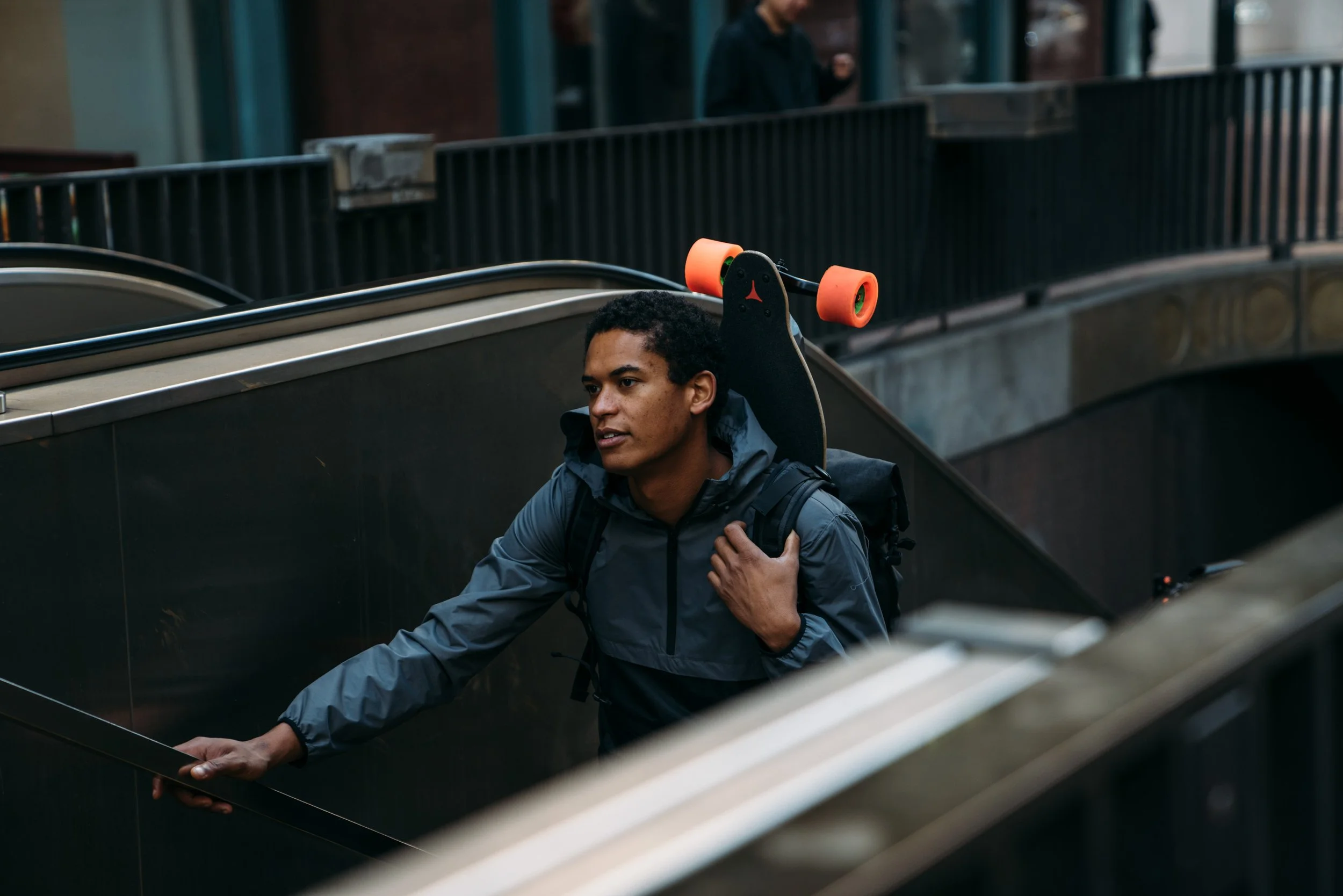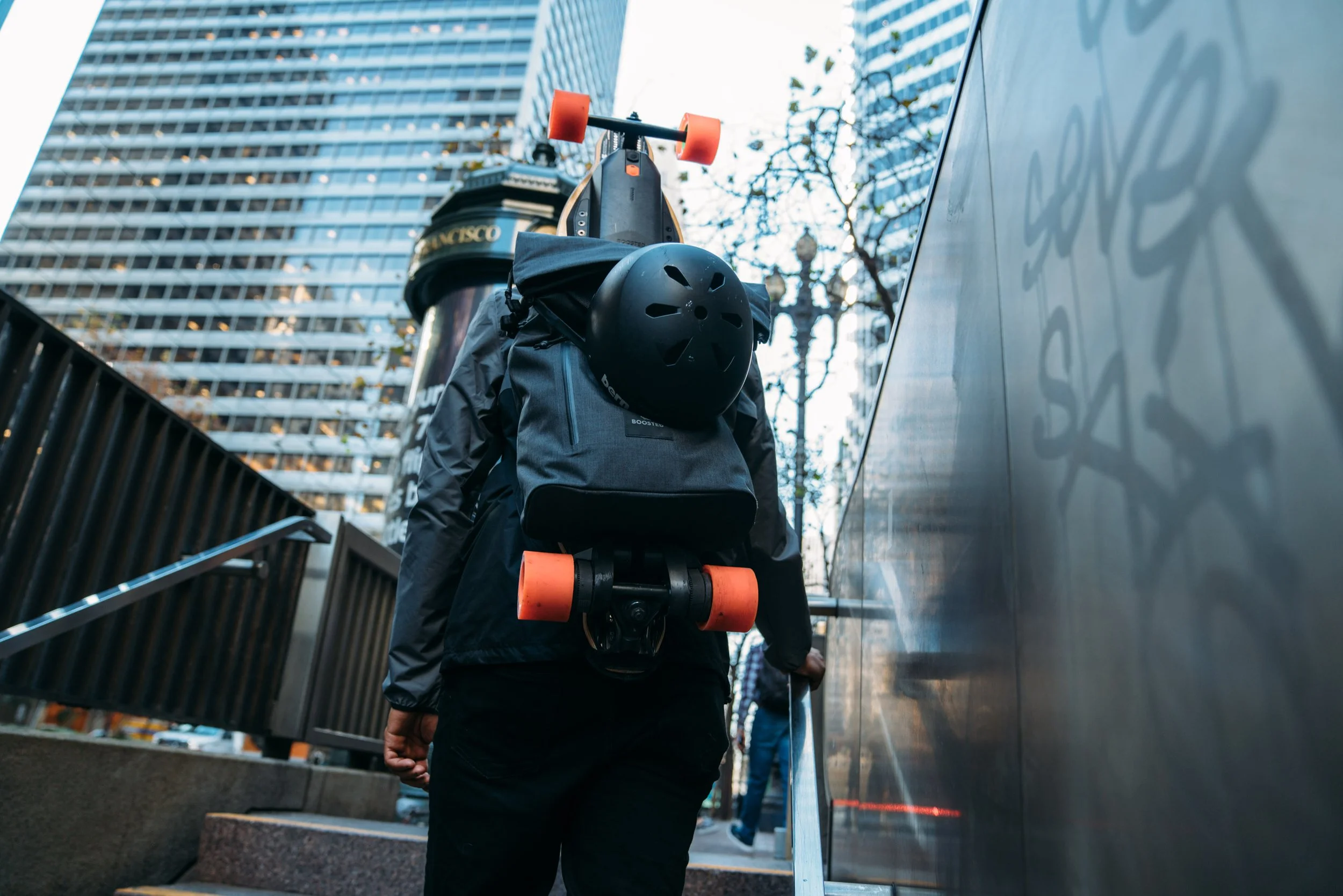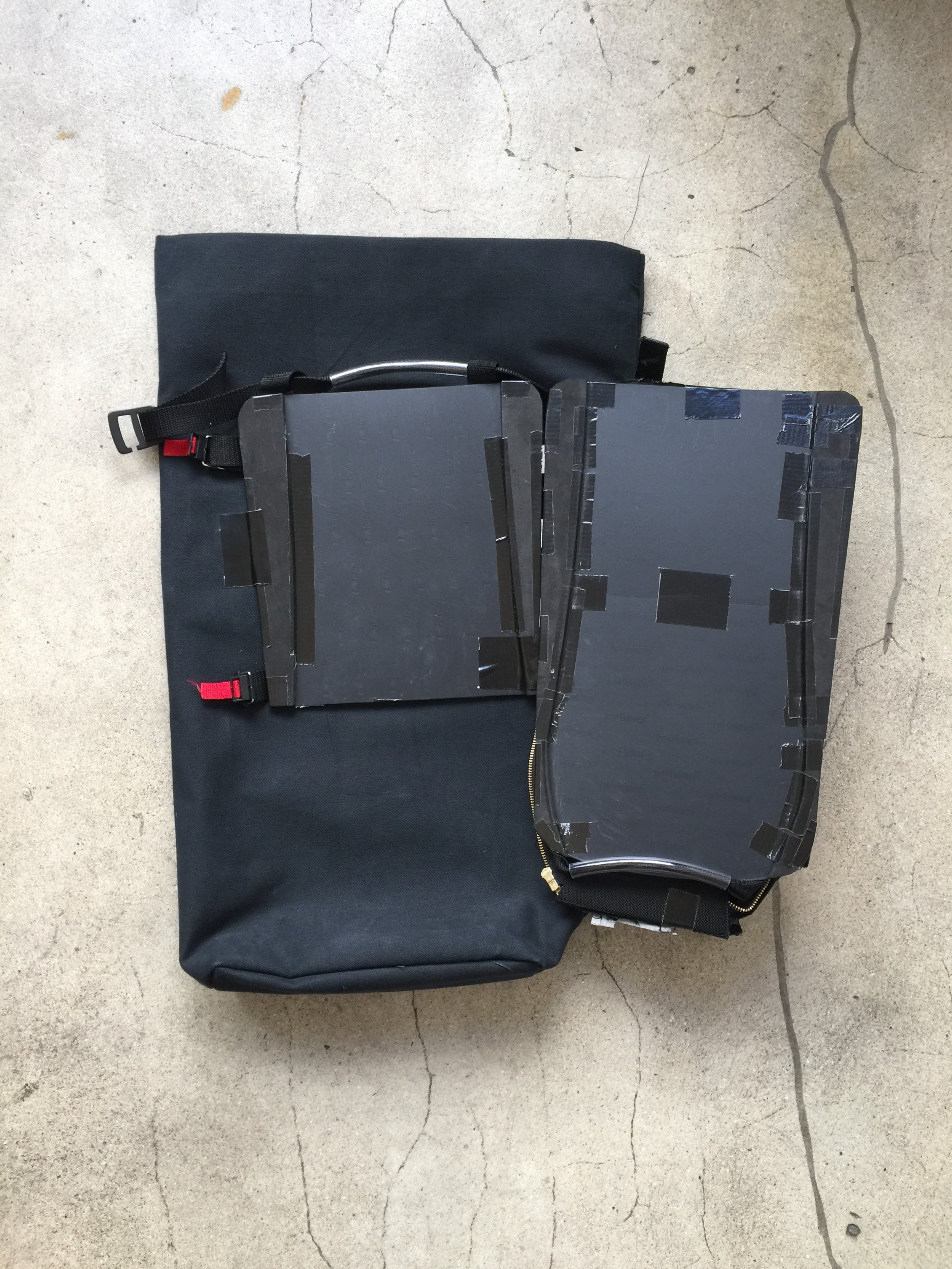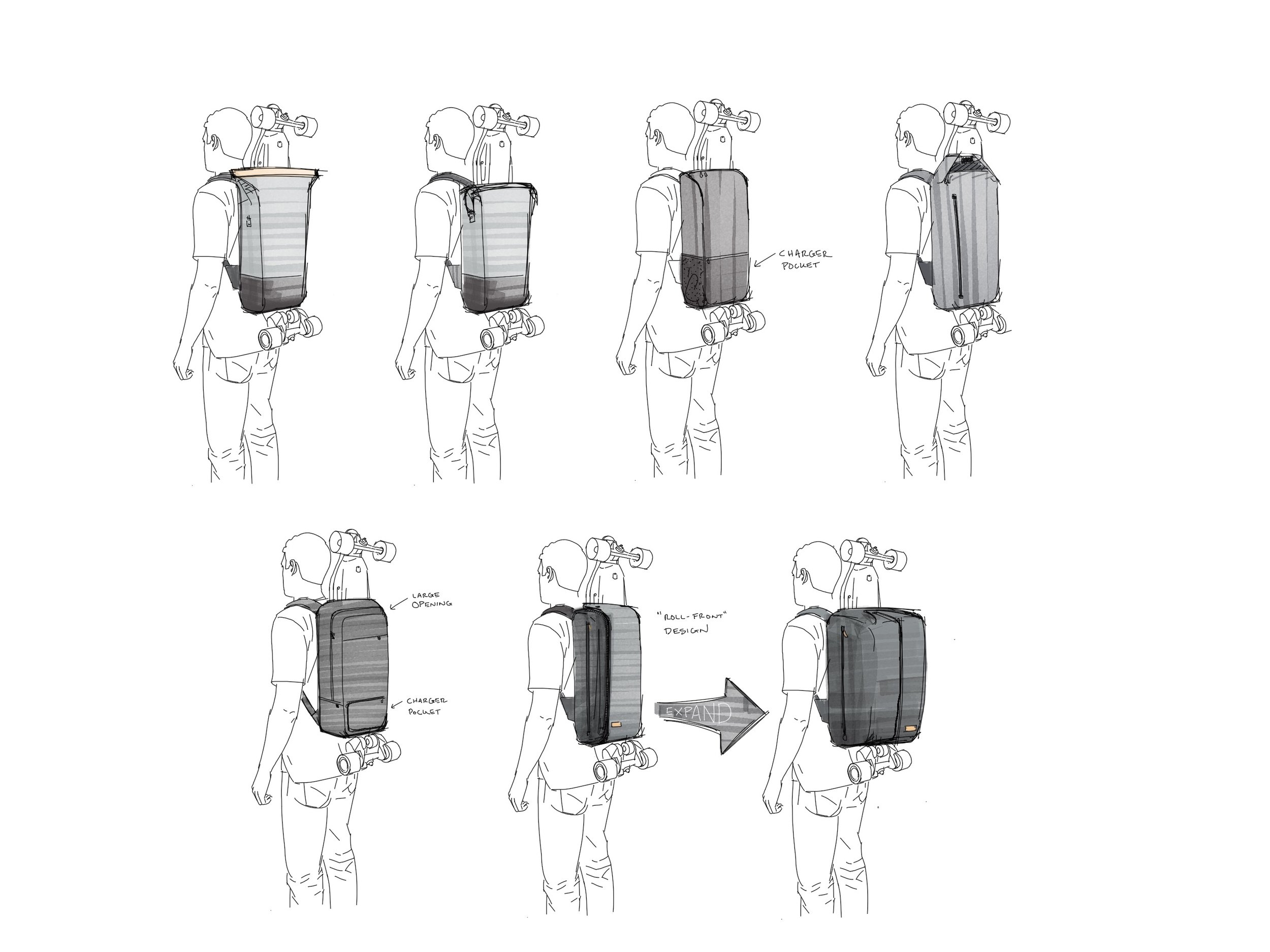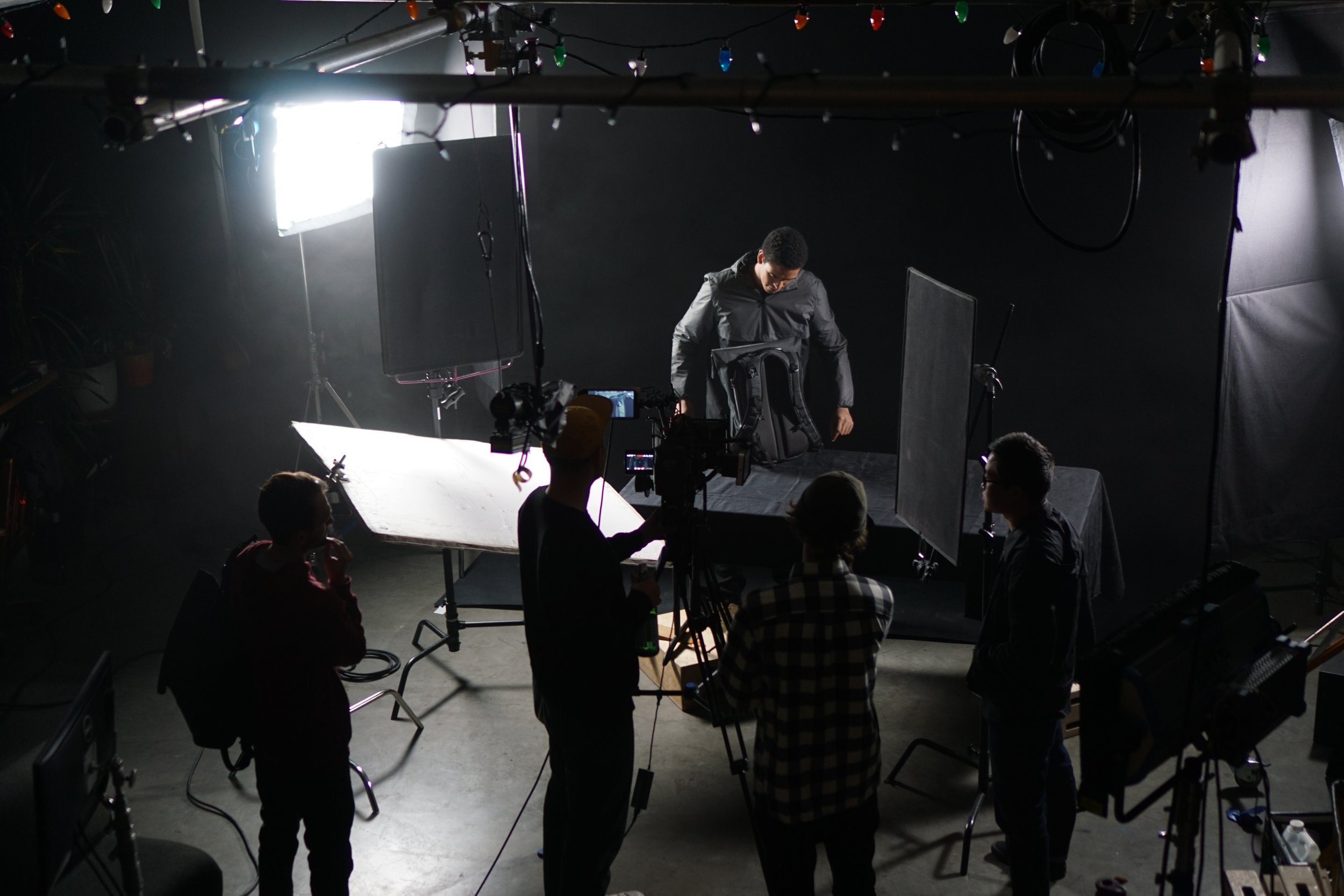Commuter
2019
Boosted
Riding a Boosted Board is about exploring, and this backpack helps take that freedom even further. Crafted from hard-wearing materials and presented in a refined silhouette, it’s a clean aesthetic that fits into any situation. With expandable, fold-top construction, the bag adapts to your every need –whether that’s to work, class, or a grocery run.

Heavy Load
One of the best things about a Boosted Board is its portability, but at 16 lbs. and with its griptape finish, carrying it around for long periods isn’t the easiest task. Finding a way to carry it comfortably makes all the difference, giving riders more freedom to use it throughout the day. Solving this challenge was the main focus of this design.
Board-carry system
At about 30” long and with a large battery on one end, a Boosted Board is quite large and top-heavy. To make it easier to carry, it’s key to keep the board close to the body for comfort. By bringing the center of mass in, we reduced strain, sagging, and movement. Inspired by hiking packs, I designed a 3-part stabilization system to hold the board securely against the rider’s back.
A fold-down flap holds the tail of the board and protects the rider from the deck’s griptape
A contoured panel and aluminum crossbar hug the board firmly in place
An adjustable stabilizer strap wraps under the board’s battery, transferring its weight onto the pack straps

Designing by prototype
When it comes to hands-on problems, the best way to solve them is with hands-on design. I jumped right into prototyping and testing ideas. To start, I looked at hiking packs to understand how they handle heavy loads. This helped me tackle user challenges upfront, so they wouldn’t slow us down later. I created sewn prototypes and quick mockups to test the concepts and explore potential solutions before bringing them to vendors. Once we partnered with them, we refined those ideas and cleaned them up for mass production.
First prototype with motor controller interface (sewn)
second prototype (board hugging)
third prototype with webbing strap (vendor)
fourth prototype with rigid cross bar placed too low, yet effective (vendor)
Bag Design
The bag’s simple silhouette makes it versatile enough to fit in anywhere, while the technical construction adds an edge. The large fold-top flap with a reflective tag keeps it naturally water-resistant and gives you the option to expand the bag from 25 to 30 liters—perfect for fitting longer items. Details like waterproof YKK zips, exposed webbing, magnetic Fidlock fasteners, and durable Hypalon fabric on high-wear areas tie it all together, making sure the bag stands up to whatever you throw at it.
Explorations
Initial form explorations around silhouette and ways to integrate expansion. My previous personal project “leather” also fed into this work.
Detail & Interior
Details like interior storage pockets and organization. This design also prioritizes keeping weight as close to the user as possible.
Rider-specific features
Beyond just carrying the board, I packed in details designed with riders in mind. A magnetic outer pocket lets you stash your remote one-handed without taking the bag off. Inside, a dedicated holster keeps your charger secure for quick top-ups on the go. The roll-top’s magnetic clasps double as helmet fasteners, so you’re never stuck carrying it around. And of course, the everyday essentials— a padded, zippered laptop sleeve, a tablet sleeve, document storage, and two lined accessory pockets to keep everything organized and protected.
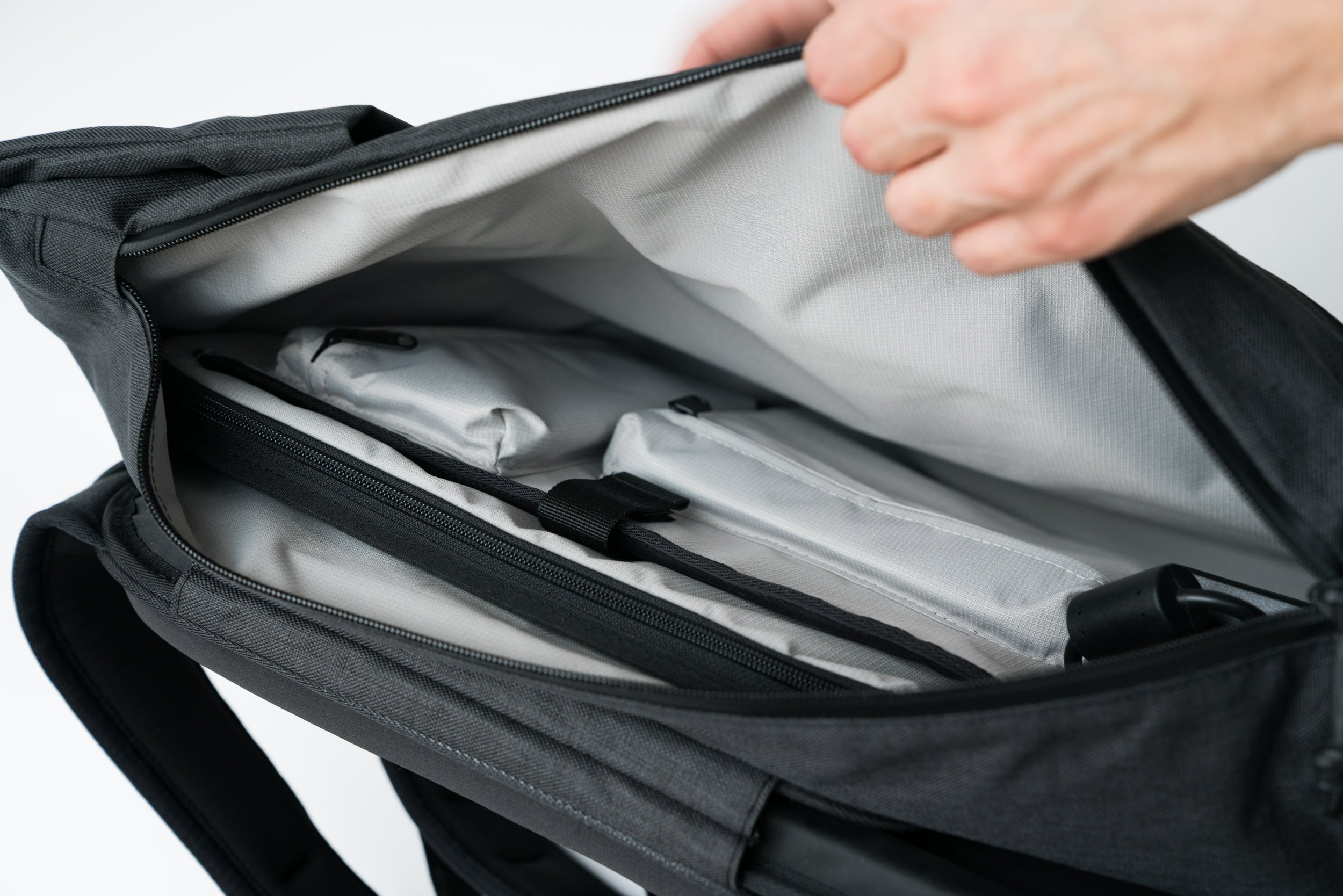
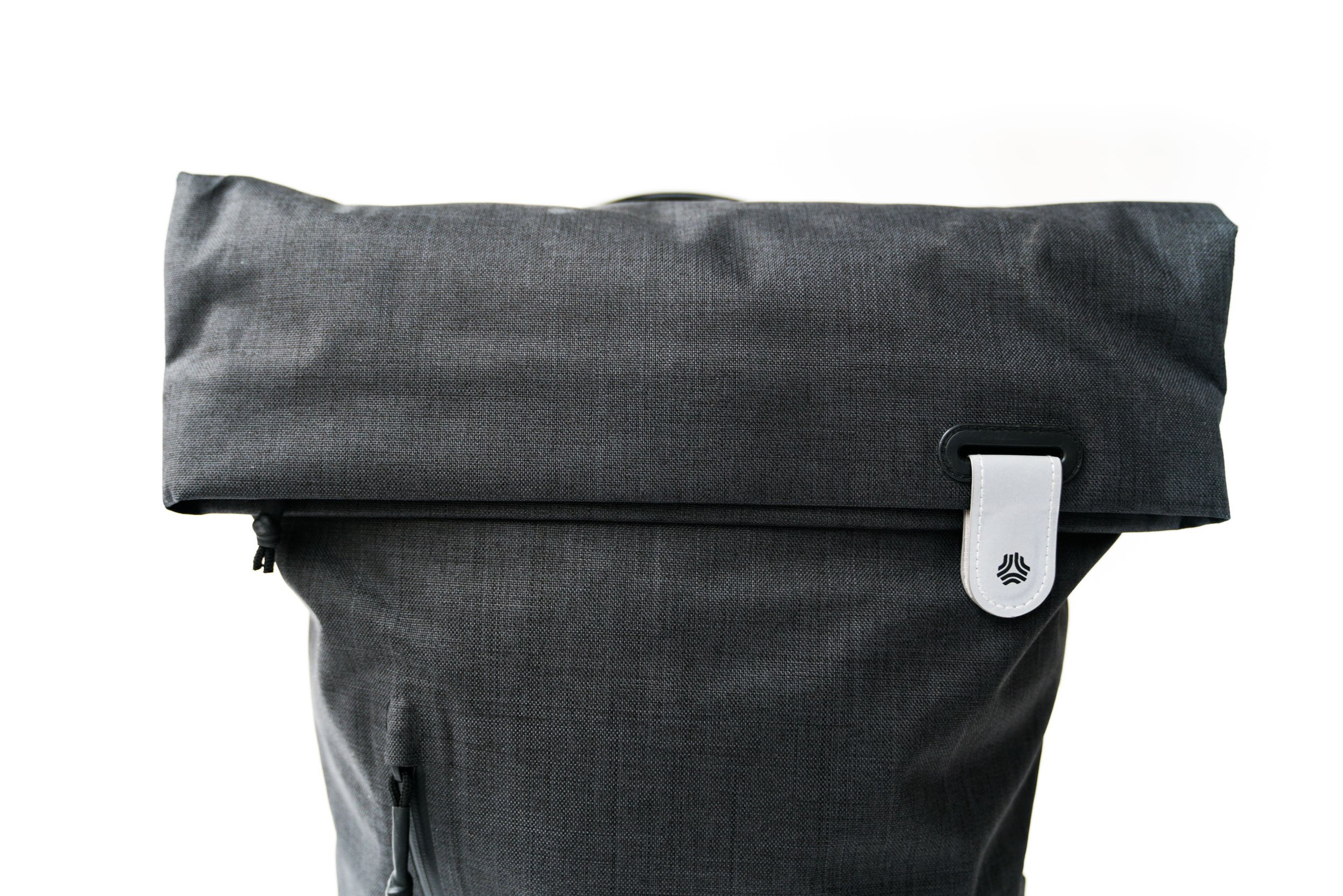
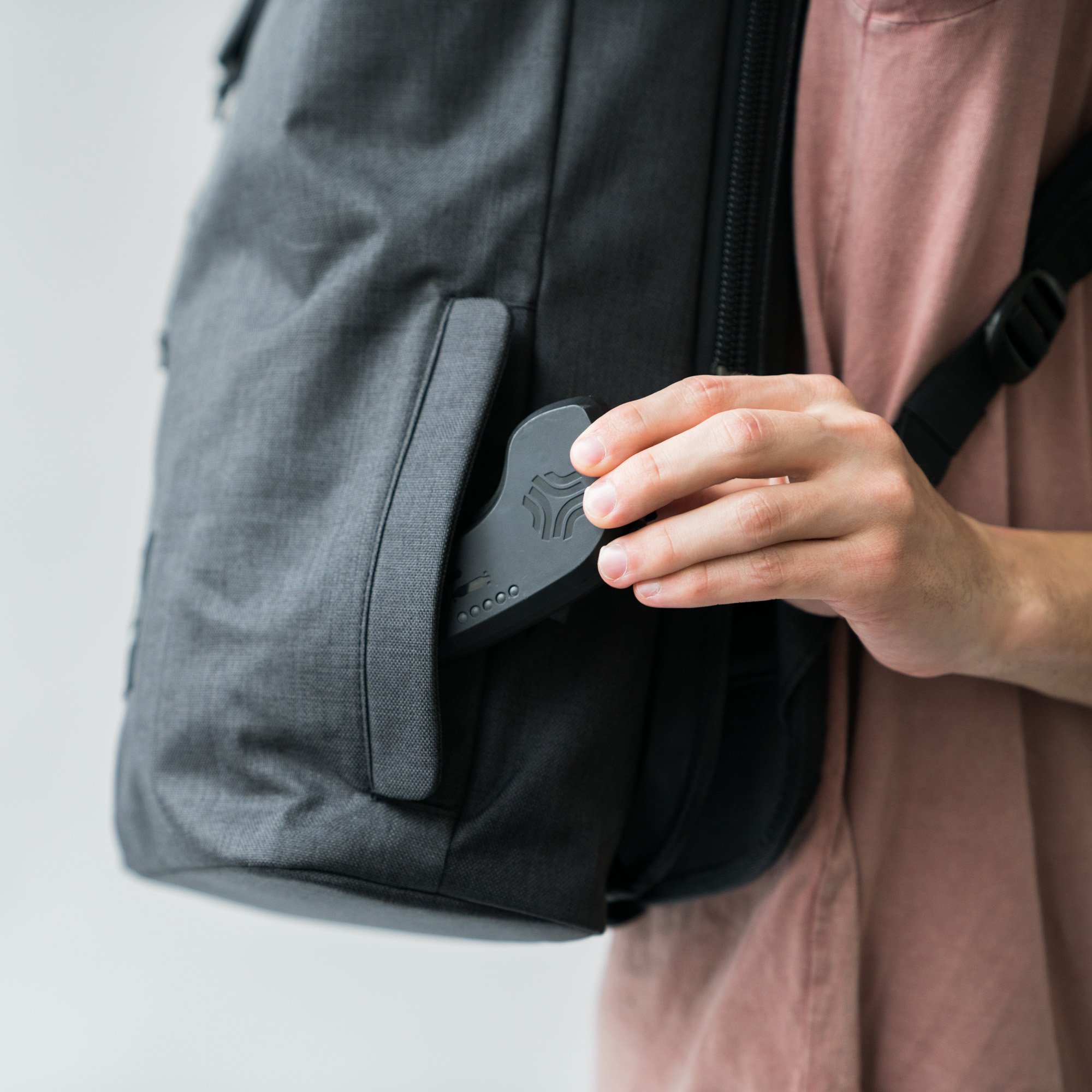
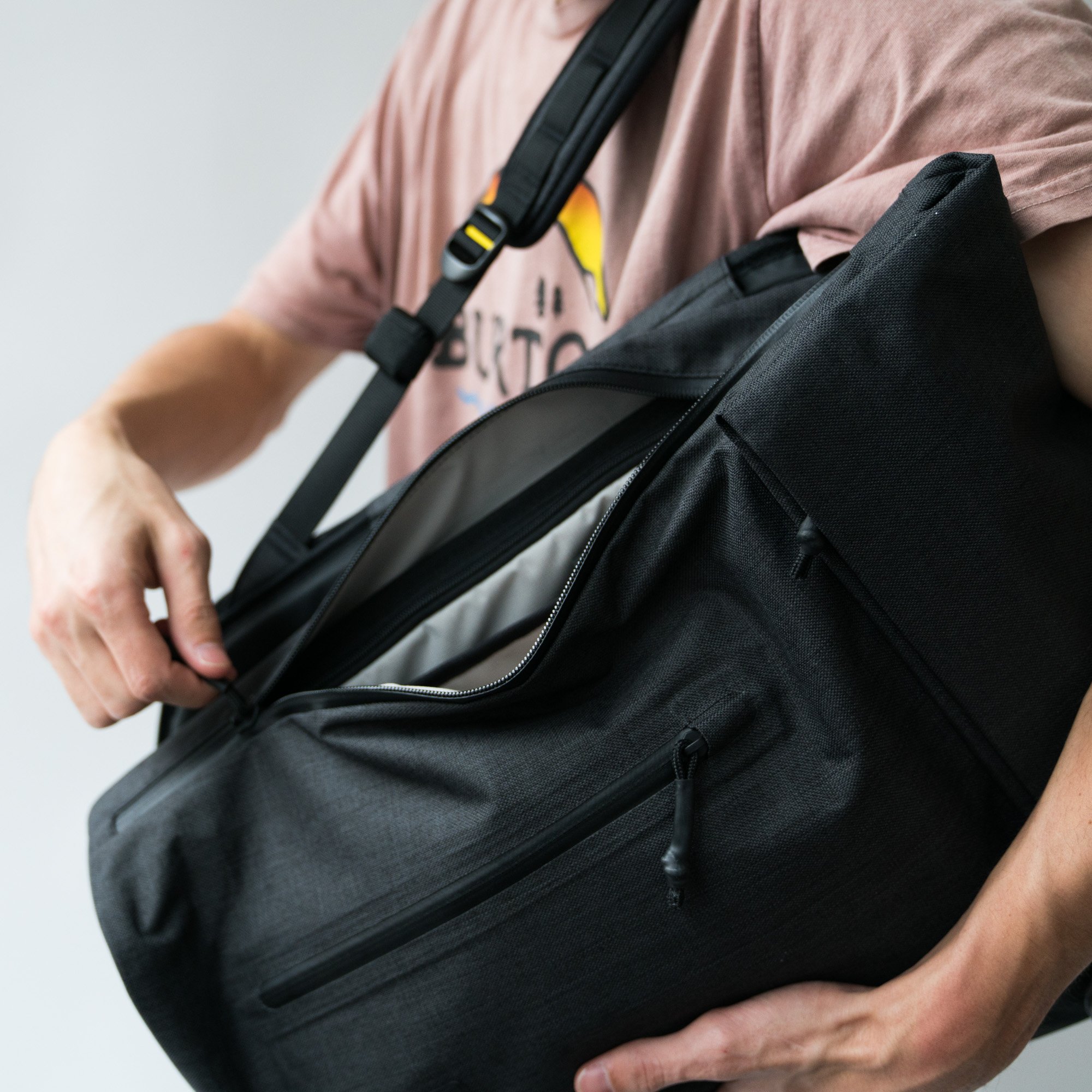

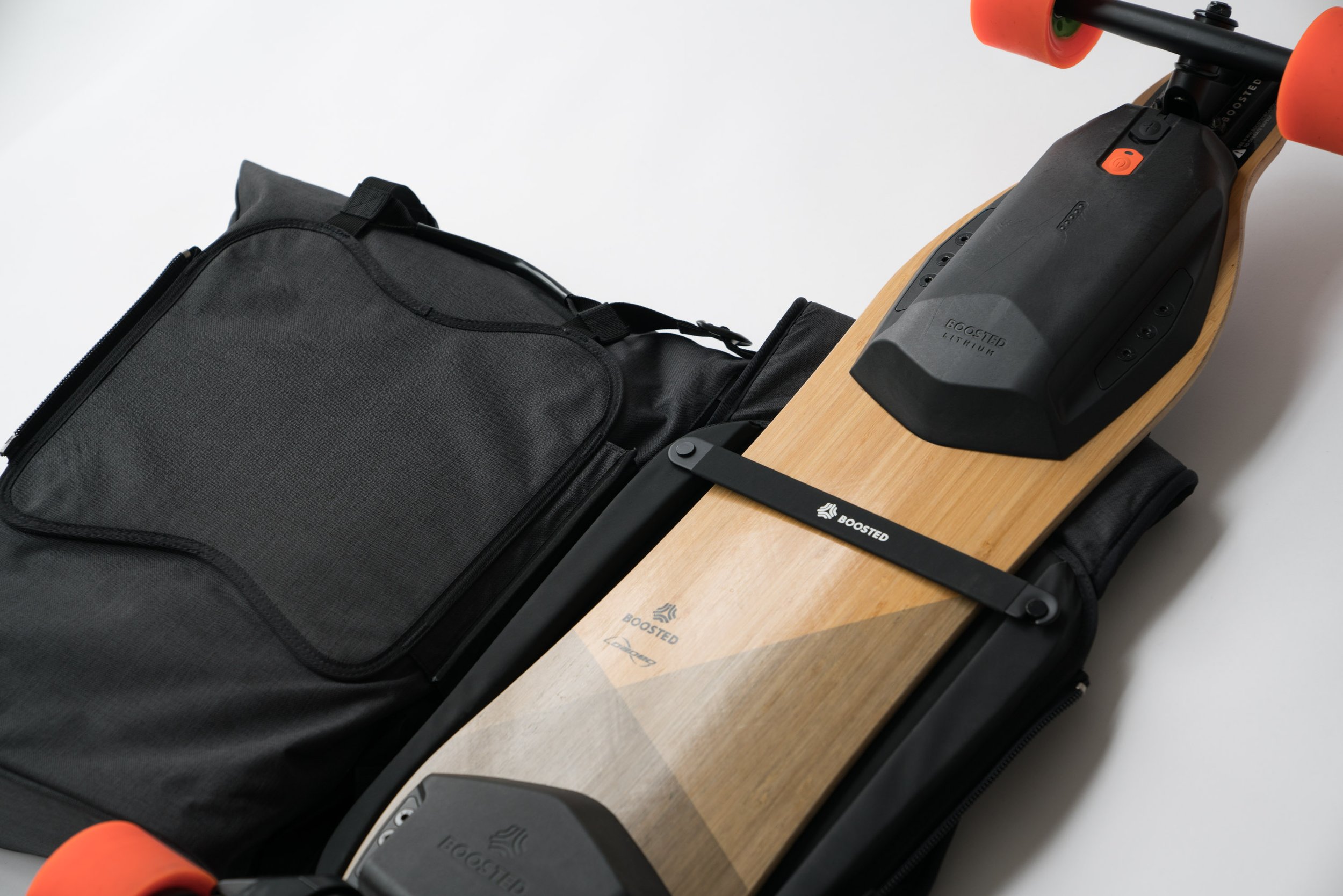

Testing & Refining
To make sure this bag could handle anything, we put it through some seriously brutal testing. Working closely with our overseas vendor, we pushed sample bags to their limits—filling them with an 80 lb. sack of concrete and a Boosted Board and shaking them like crazy, hanging them by the straps for days, and stuffing them full of paper and taking a shower to test waterproofing. These extreme tests helped us dial in the right materials, construction methods, and reinforcement points to ensure the bag could stand up to real-world abuse.
Design for manufacturing
Bringing our manufacturing partner into the process early made scaling up much smoother. Visiting them throughout each design phase created a tight feedback loop, helping us refine details quickly. Honestly, seeing a bag I designed roll off the production line in such large numbers was pretty surreal. It also made me reflect on sustainability and resource use. That’s why I focus on designing things to last—because one of the best ways to reduce waste is to create products people will use for years.
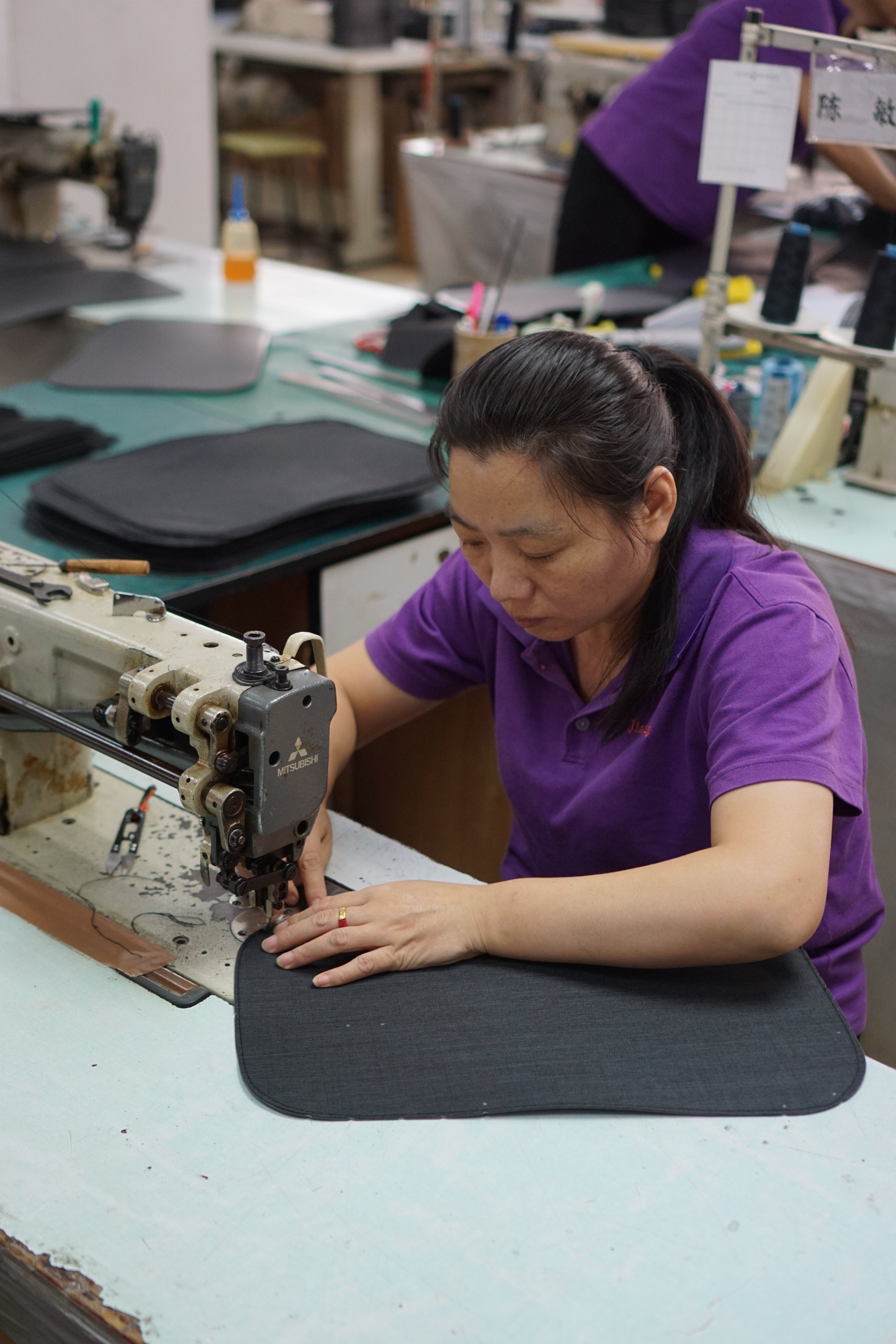
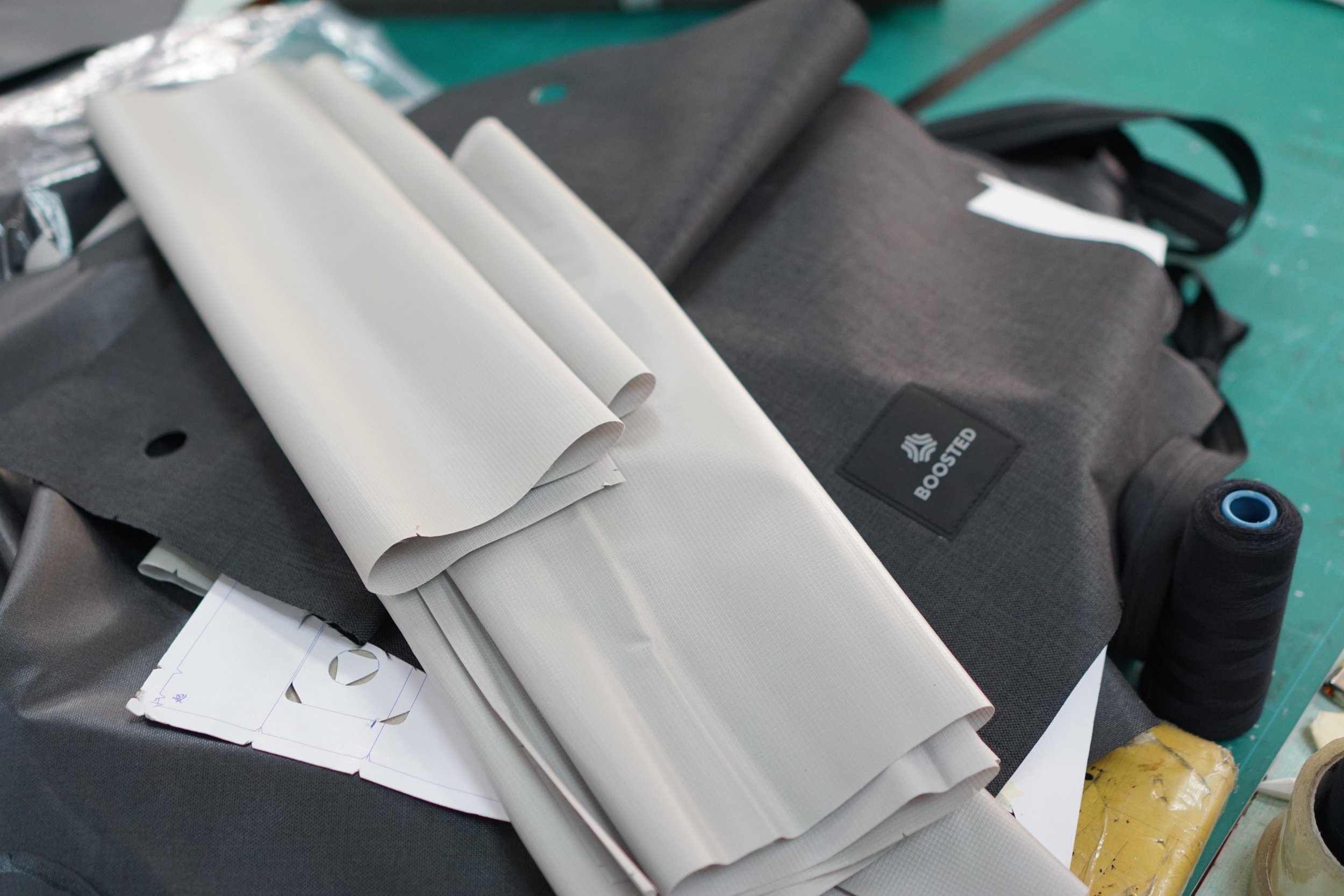
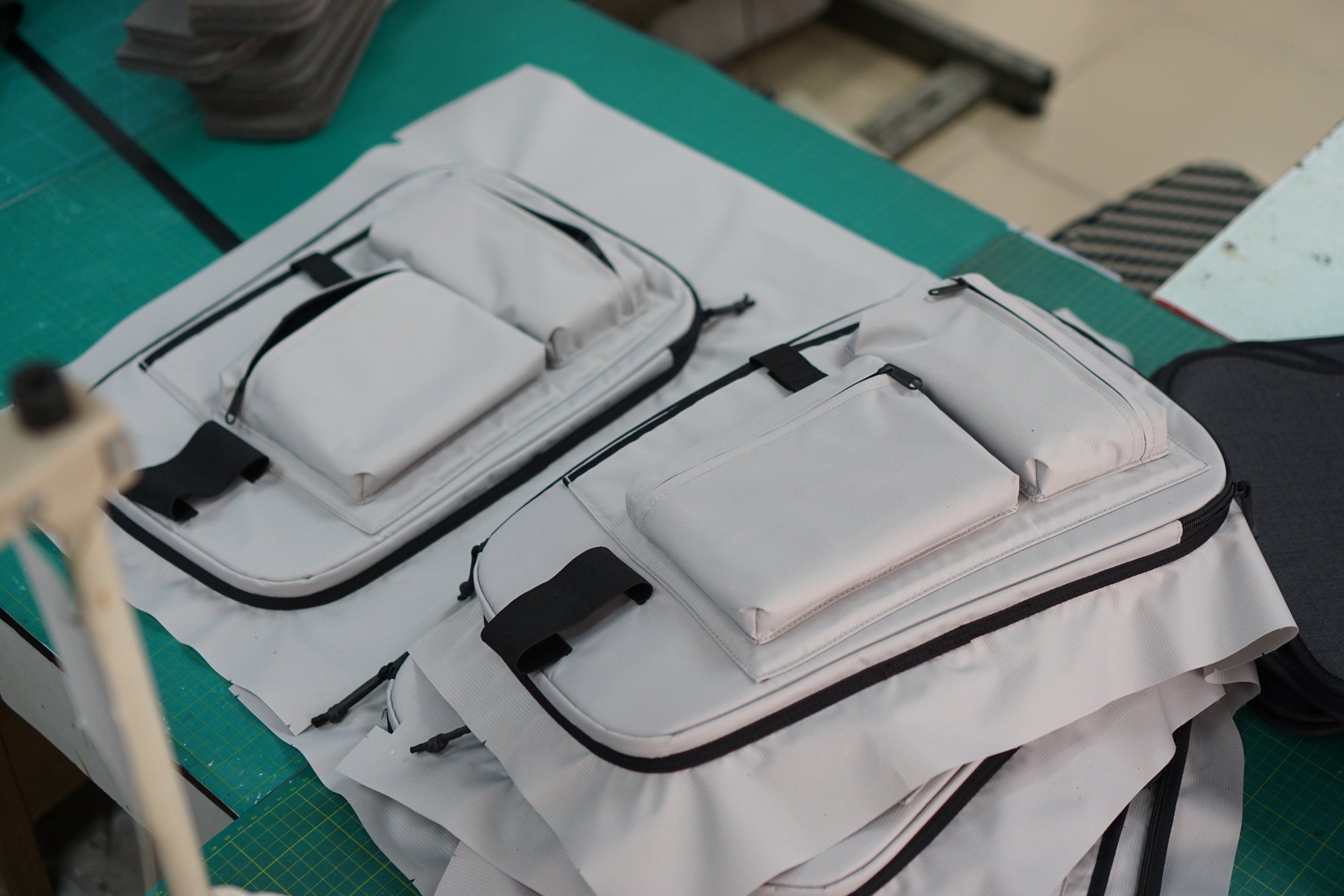
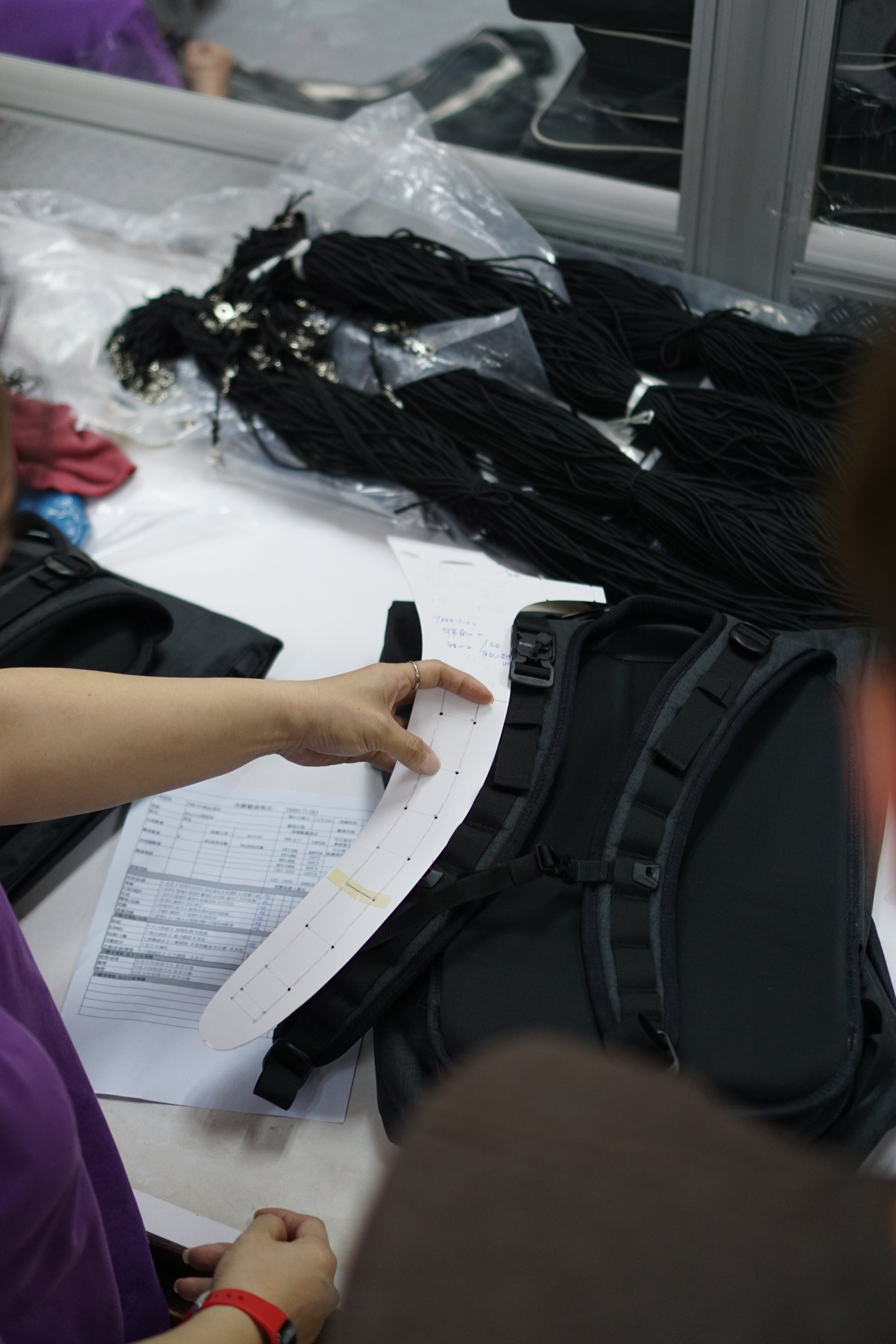
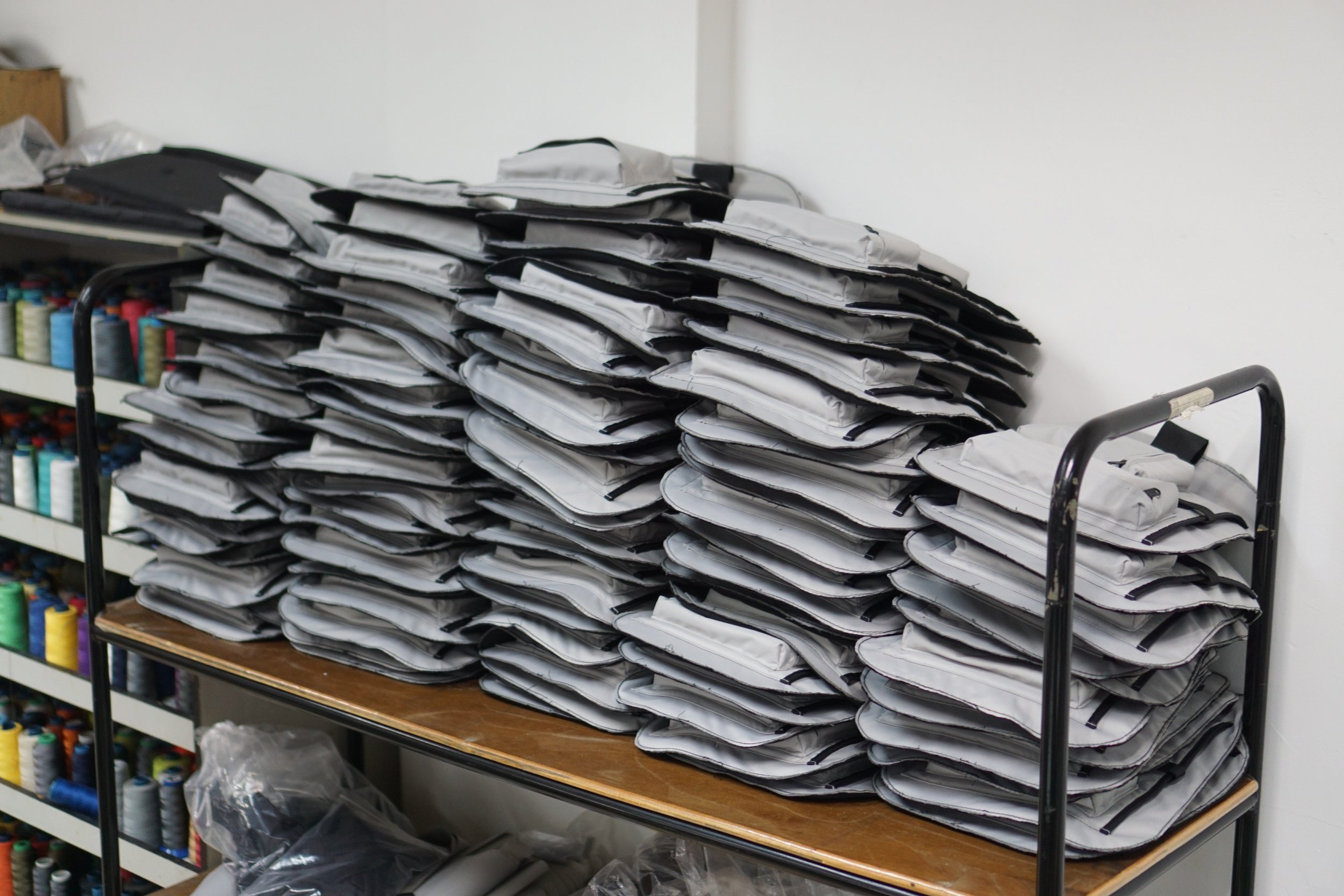

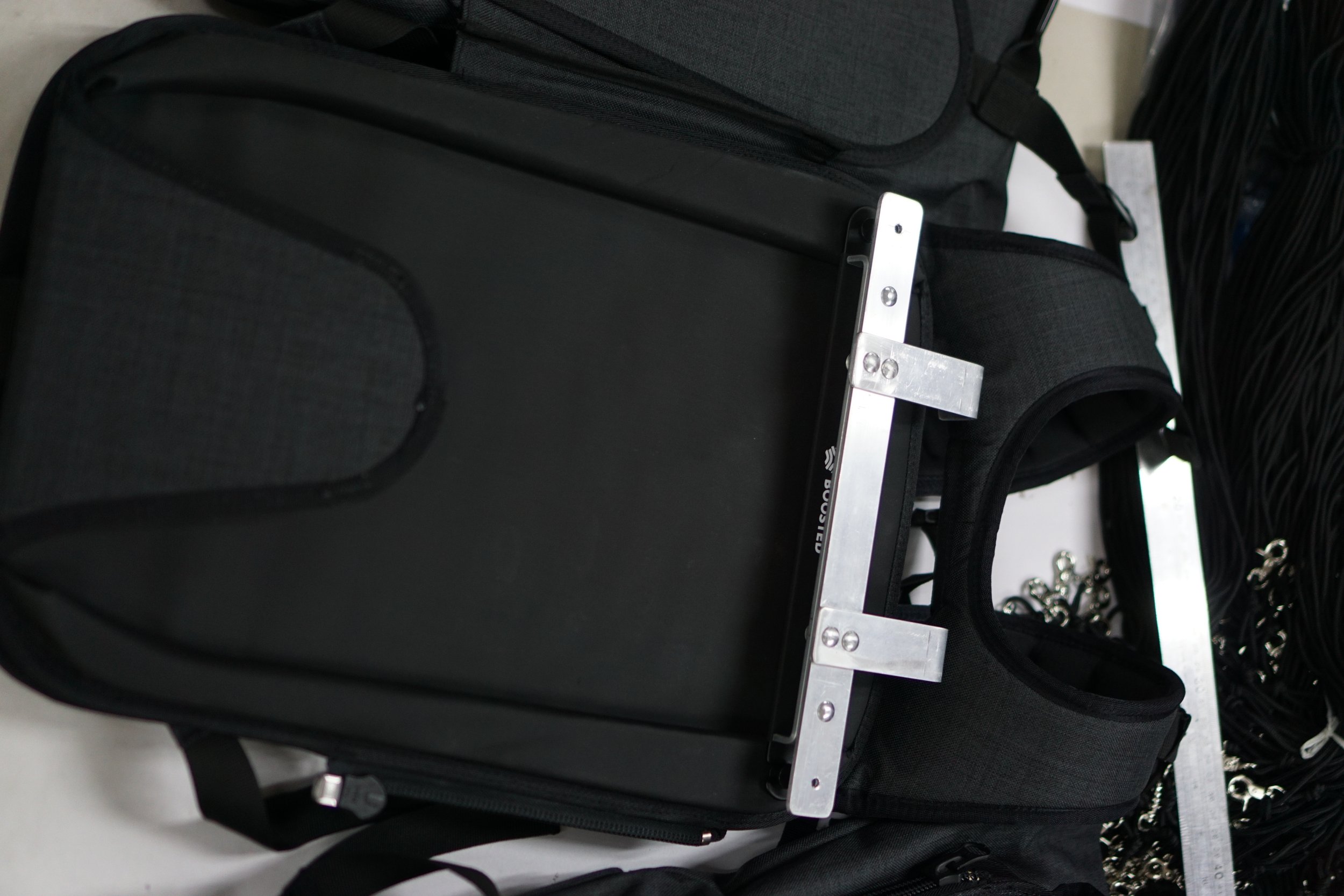
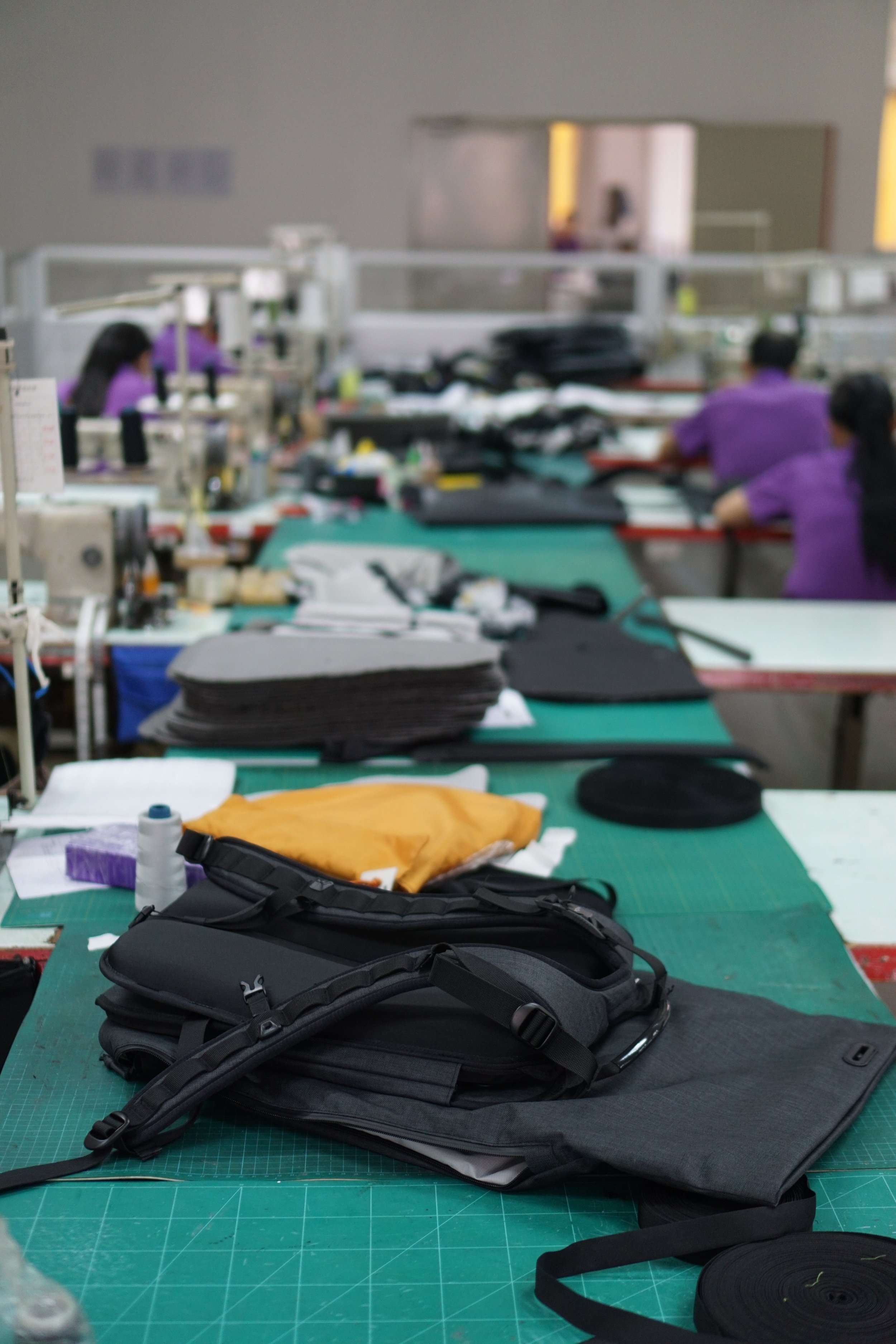
Nick D. – West Orange
“As much as I love the board already, the design and quality of the bag impressed me the most.”
Chris – Amazon
“ It’s on my back when I go to work every day. It’s on my back, board and all, when I go out and need to walk around a store. And after all this, it still looks like the day I got it.”
Let’s connect!




